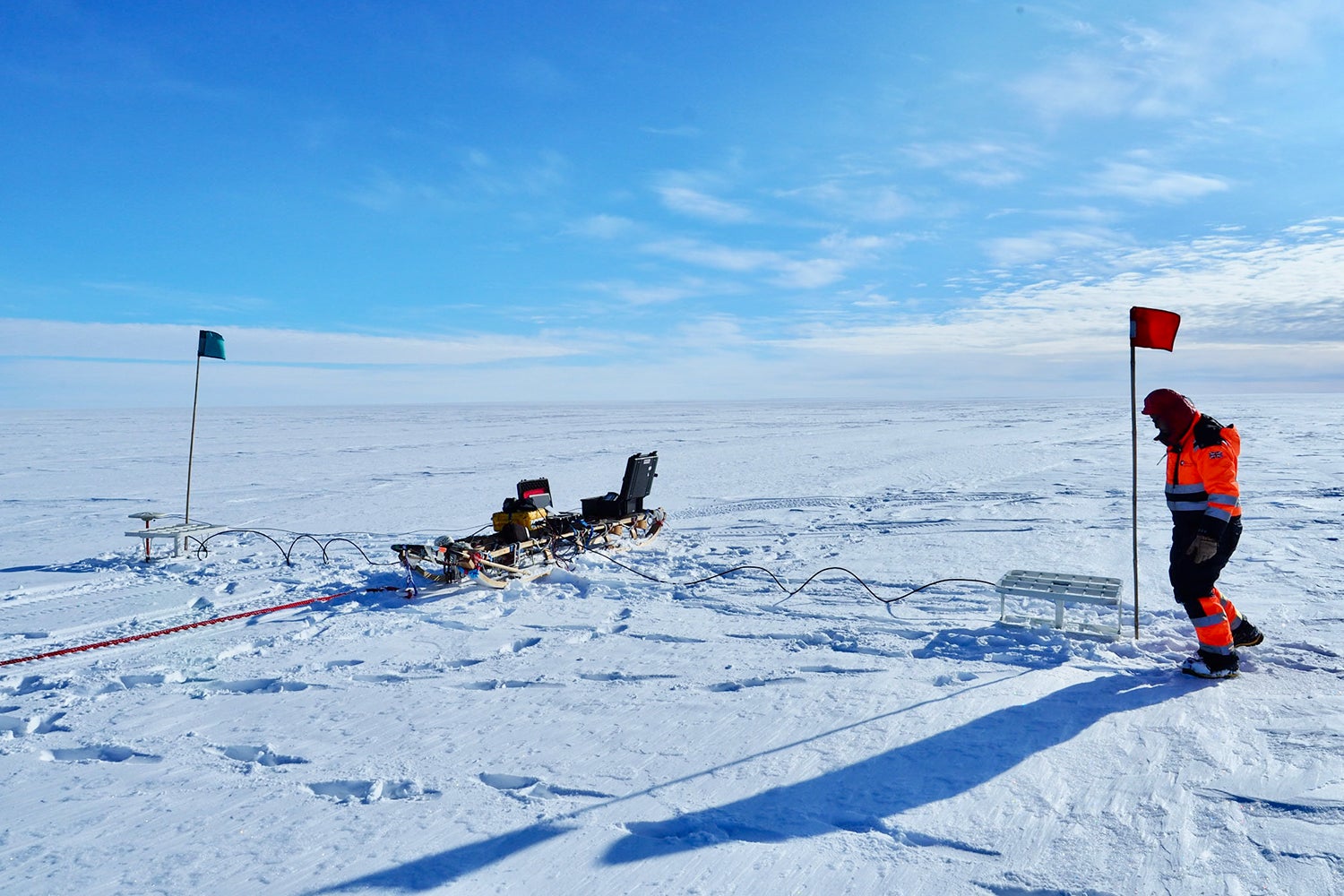Stanford researchers have found large thawed or close-to-thawed areas under coastal portions of the ice sheet that holds back glaciers in the Wilkes Subglacial Basin.

In a warming climate, meltwater from Antarctica is expected to contribute significantly to rising seas. For the most part, though, research has been focused on West Antarctica, in places like the Thwaites Glacier, which has seen significant melt in recent decades.
In a paper published Jan. 19 in Geophysical Research Letters, researchers at Stanford have shown that the Wilkes Subglacial Basin in East Antarctica, which holds enough ice to raise global sea levels by more than 10 feet, could be closer to runaway melting than anyone realized.
“There hasn’t been much analysis in this region – there’s huge volume of ice there, but it has been relatively stable,” said Eliza Dawson, a PhD student in geophysics at Stanford and first author on the paper. “We’re looking at the temperature at the base of the ice sheet for the first time and how close it is to potentially melting.”
The Wilkes Subglacial Basin is about the size of California and empties into the Southern Ocean through a relatively small section of the coastline. Dawson and her colleagues found evidence that the base of the ice sheet is close to thawing. This raises the possibility that this coastal region, which holds back the ice within the entire Wilkes Subglacial Basin, could be sensitive to even small changes in temperature.
A mix of frozen and thawed
Previous research has shown that, because the ground in this region is below sea level and slopes downward away from the ocean, the Wilkes Subglacial Basin could be particularly vulnerable to irreversible melting if warming seawater were to get under the ice sheet. Dawson and her colleagues are the first to look at how the current temperature at the base of the ice sheet in the region could add to this vulnerability.
The researchers collected data from existing radar surveys conducted by planes flying over the glacier. The planes record reflections of electromagnetic signals that have traveled through the ice sheet and bounced off the ground beneath it. Dawson and her colleagues developed a new technique to analyze this data, turning cross-sectional images of ice and bedrock into information about the temperature conditions at the base of the ice sheet.

“The temperature of the ice affects how much the radar is reflected in multiple ways, so a single measurement is ambiguous,” said Dustin Schroeder, associate professor of geophysics and of electrical engineering. “This statistical approach involved essentially picking regions that you could assume were either frozen or thawed and comparing other radar signatures to them. It allowed us to say whether other areas of the ice sheet were definitely frozen, definitely thawed, or tough to call.”
The researchers found large areas of frozen and thawed ground interspersed across the region, but the majority of the area couldn’t be definitively classified as one or the other. In some cases, this may be because of changes in the geometry of the ice sheet or other complications in the data, but it could also mean that large sections of ground under the ice sheet are either close to thawing or made up of closely intermixed frozen and thawed areas. If the latter is true, the glaciers in the Wilkes Subglacial Basin could reach a tipping point with only a small increase in temperature at the base of the ice sheet.
“This suggests that glacial retreat could be possible in the future,” Dawson said. “This part of East Antarctica has been largely overlooked, but we need to understand how it could evolve and become more unstable. What would need to happen to start seeing mass loss?”
Better predictions for East Antarctica
Different models have predicted very different futures for the Wilkes Subglacial Basin and its impact on sea level rise because there simply hasn’t been enough data about the region. The researchers are planning to integrate their radar-based temperature observations into an ice sheet model to improve predictions about how the region will evolve under various climate scenarios.
They hope their work will highlight the importance of examining this and other areas of East Antarctica that have seemed stable, but could play a significant role in our future.
“This area has conditions that we could imagine changing,” Schroeder said. “And if warm ocean water gets there, it’s going to ‘turn on’ a whole sector of Antarctica we don’t normally think about as a contributor to sea level rise.”
– Laura Castañón
